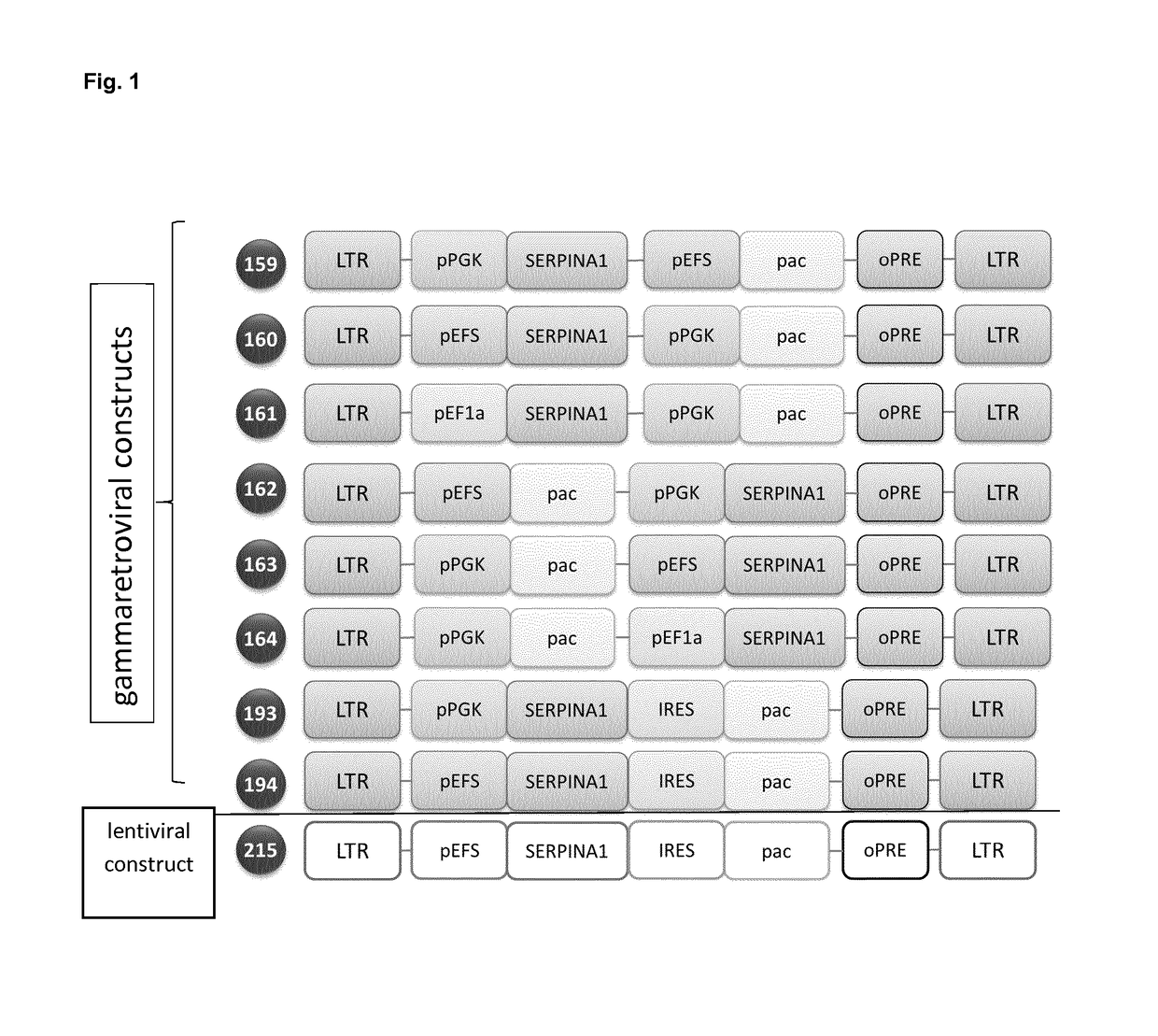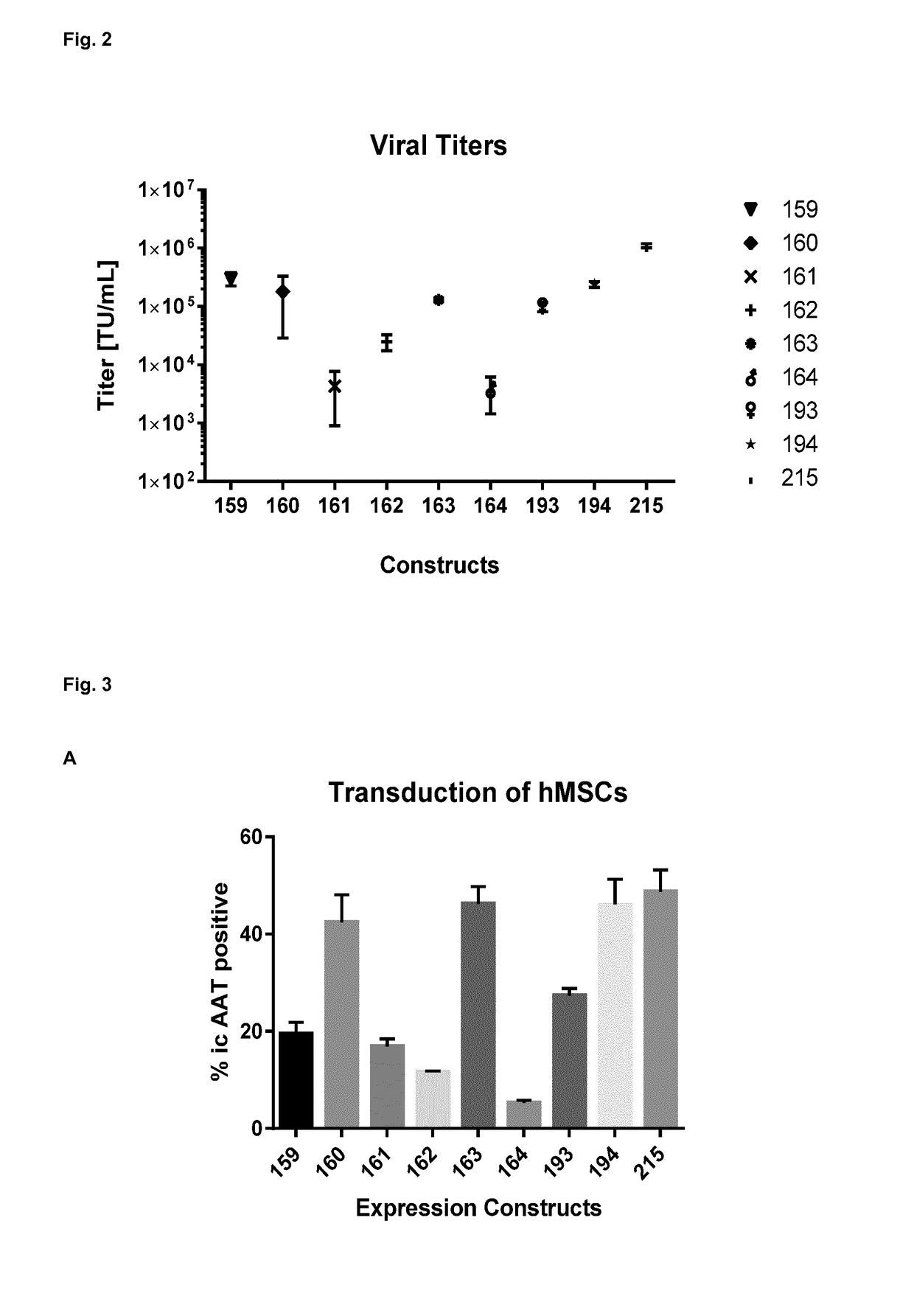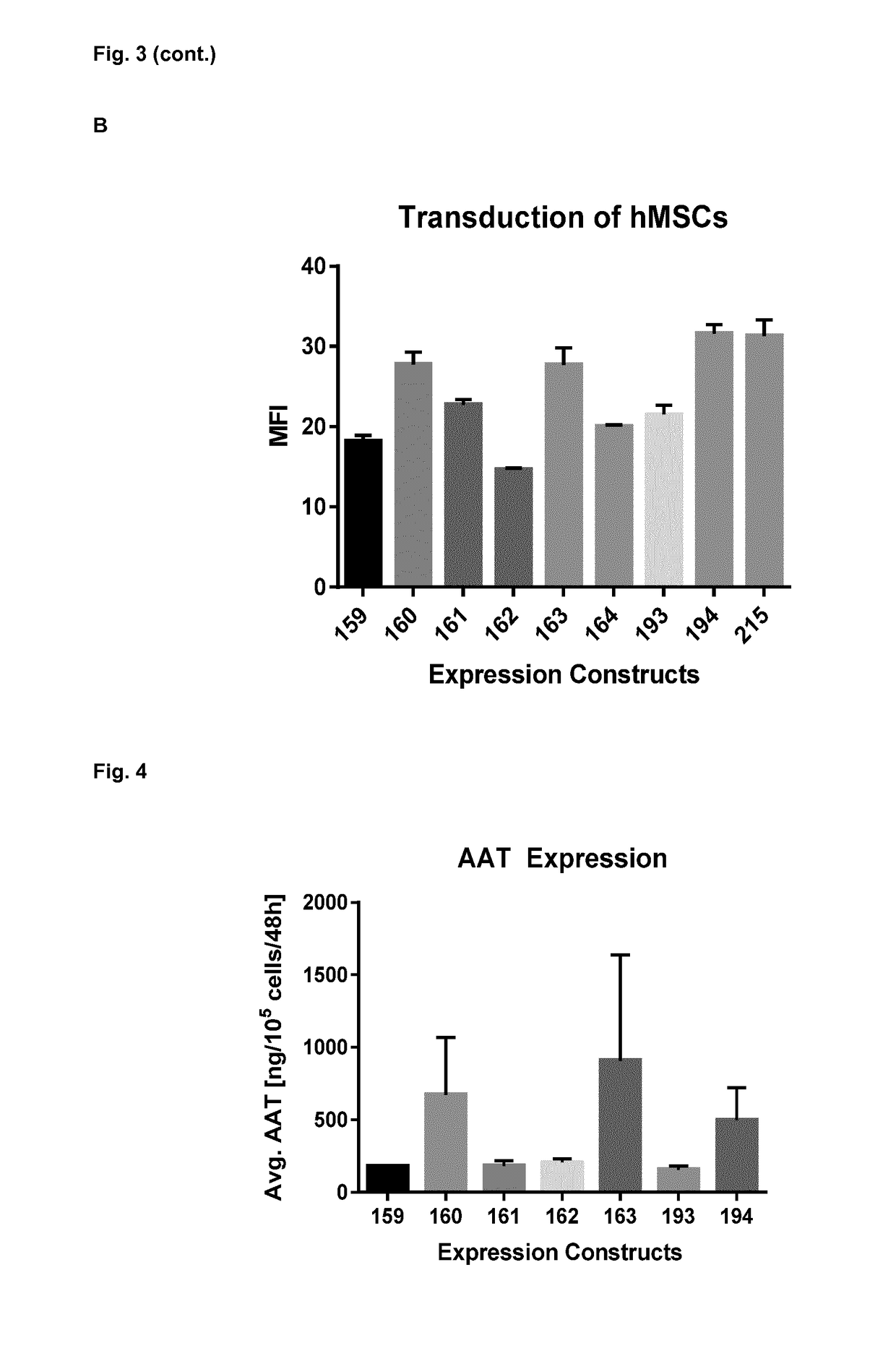Genetically modified mesenchymal stem cells expressing alpha-1 antitrypsin (AAT)
- Summary
- Abstract
- Description
- Claims
- Application Information
AI Technical Summary
Benefits of technology
Problems solved by technology
Method used
Image
Examples
examples
[0134]The invention is further described by the following examples. These are not intended to limit the scope of the invention. The experimental examples relate to the development of technology that enables Alpha-1 antitrypsin (AAT) expression from genetically modified MSCs. The examples further relate to therapeutic trials encompassing the treatment of conditions of the lung.
[0135]In preferred embodiments the examples relate to the preclinical development of a novel gene therapy product that combines the anti-inflammatory effect of Alpha-1 antitrypsin (AAT) with the immunomodulatory properties of primary human mesenchymal stem cells (MSCs) for the treatment of inflammatory lung diseases.
[0136]1. Design and Cloning of Retroviral Vector Constructs:
[0137]The transgene expression cassettes are constructed using standard cloning techniques as described in Julia Lodge, Peter Lund, Steve Minchin (2007) Gene Cloning, New York: Tylor and Francis Group. The gene expressed by these constructs...
PUM
| Property | Measurement | Unit |
|---|---|---|
| Immunogenicity | aaaaa | aaaaa |
Abstract
Description
Claims
Application Information
 Login to View More
Login to View More - R&D
- Intellectual Property
- Life Sciences
- Materials
- Tech Scout
- Unparalleled Data Quality
- Higher Quality Content
- 60% Fewer Hallucinations
Browse by: Latest US Patents, China's latest patents, Technical Efficacy Thesaurus, Application Domain, Technology Topic, Popular Technical Reports.
© 2025 PatSnap. All rights reserved.Legal|Privacy policy|Modern Slavery Act Transparency Statement|Sitemap|About US| Contact US: help@patsnap.com



